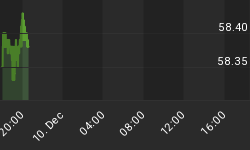The definition of inflation is a very hotly debated issue among investors, economists, and of course politicians. Long-time readers will know we've written about it many times before, but given recent developments feel the need to provide a brief refresher course to help investors understand the risks quickly emerging in financial markets.
Inflation was defined as expansion in money supply for years and years - and it still is by economists from the Austrian school of thought. However, in the early 2000s the Federal Reserve conveniently stopped keeping track of M3 - the broadest measure of money supply which most had used to gauge inflation.
To fill the void, most economists (including those at the Federal Reserve) substituted various metrics to track prices, the argument being that rising prices equal inflation. The truth being that these metrics were simply easier to manipulate. The problem is that the Fed's presumption is untrue; rising prices don't equal inflation, though inflation usually accompanies - though not always - rising prices.
The true nature of inflation as an expansion in the money supply has never changed, despite the trickery of the Federal Reserve. However, even if money supply expands, inflation only occurs if the velocity of money remains constant or escalates.
Huh?
In other words, despite all the harping from Ron Paul and the Tea Party, the Federal Reserve can print money until it is blue in the face; but if money isn't circulating through the economy, inflation won't result. And that's exactly what has happened between 2007 and the present.
When the housing bubble burst in 2007, the value of assets collateralizing a HUGE amount of debt fell substantially. A lot of people who had borrowed money to buy homes and other assets suddenly found themselves with negative equity - the owed more than the underlying assets were worth.
Adding to this already horrific problem is that there was also a wave of defaults by people who had been convinced to buy assets using teaser rates or other adjustable rate lending mechanisms. So much excess supply had been built up on debt - and so much was being dumped back on the market - that prices fell precipitously.
It's a process known rather calmly as debt deleveraging. In other circles it's just called a cluster...
Fast forward four years, and the Fed has expanded its balance sheet by a few hundred percent in order to absorb assets that would have otherwise been dumped on the market, pushing prices even lower. While the Fed may not be using much ink for these operations, they are effectively printing money. Their saving grace - so far - has been that because the economy slowed to such a crawl, the velocity of money has fallen to and remained at historical lows.
Translation: The Federal Reserve has printed LOTS of money and put it all in the basement; none of the new bills have been making there way out to flow around the economy.
Now, friends, we're facing a real problem. After years of extremely low velocity, the economy is picking up. More and more data shows that a very substantial recovery is on the way. What's more, the Fed hasn't yet contracted its balance sheet in anticipation. All that new money they created may be about to start making its way into the global economy.
Read: Helicopter Ben is cranking up the rotors. And if all the new money he's created in the past 4-5 years starts making its way into the economy, all the ingredients have come together. Get ready for Jimmy Carter style inflation.
A wise investor would do well to prepare.















